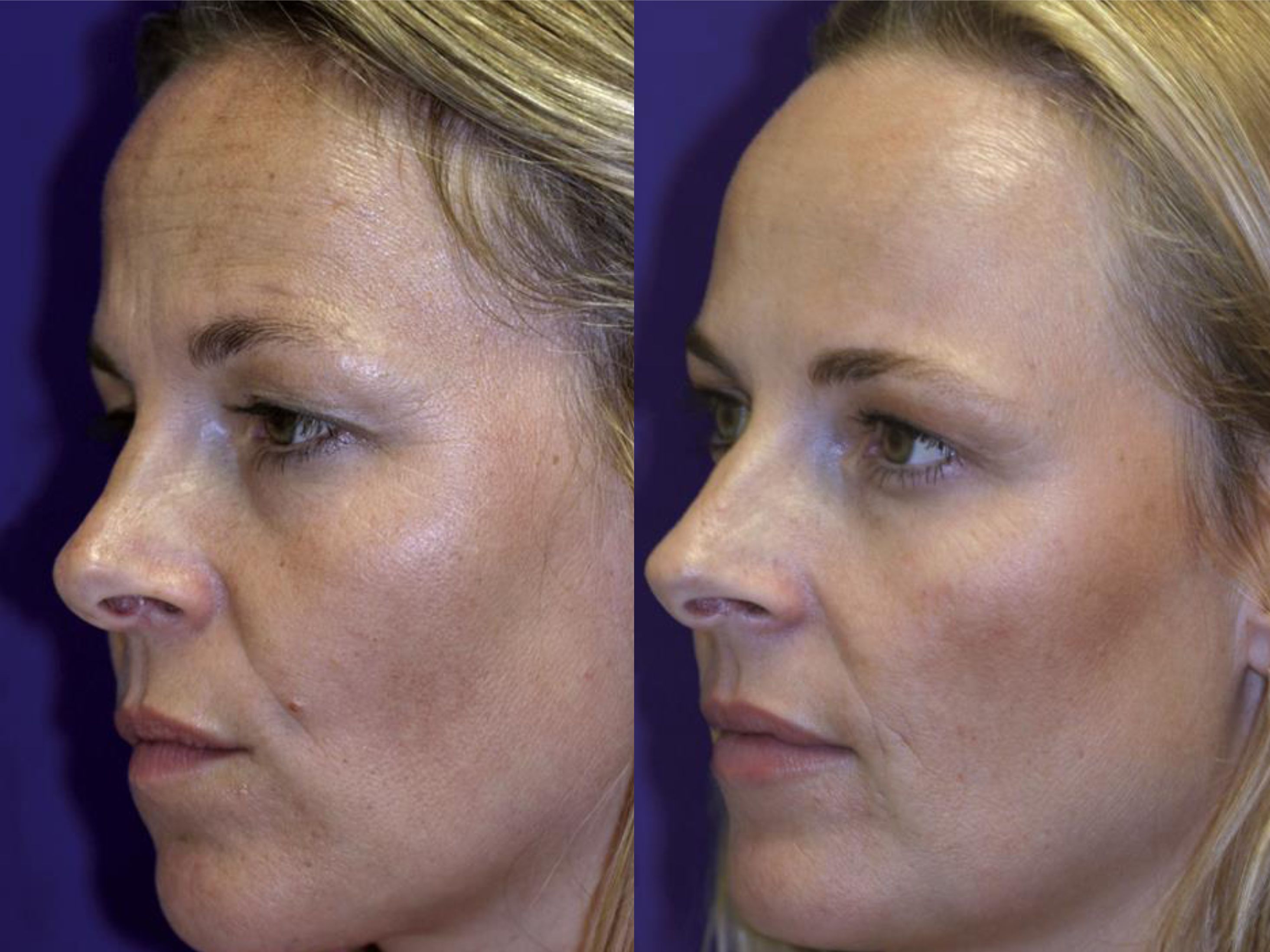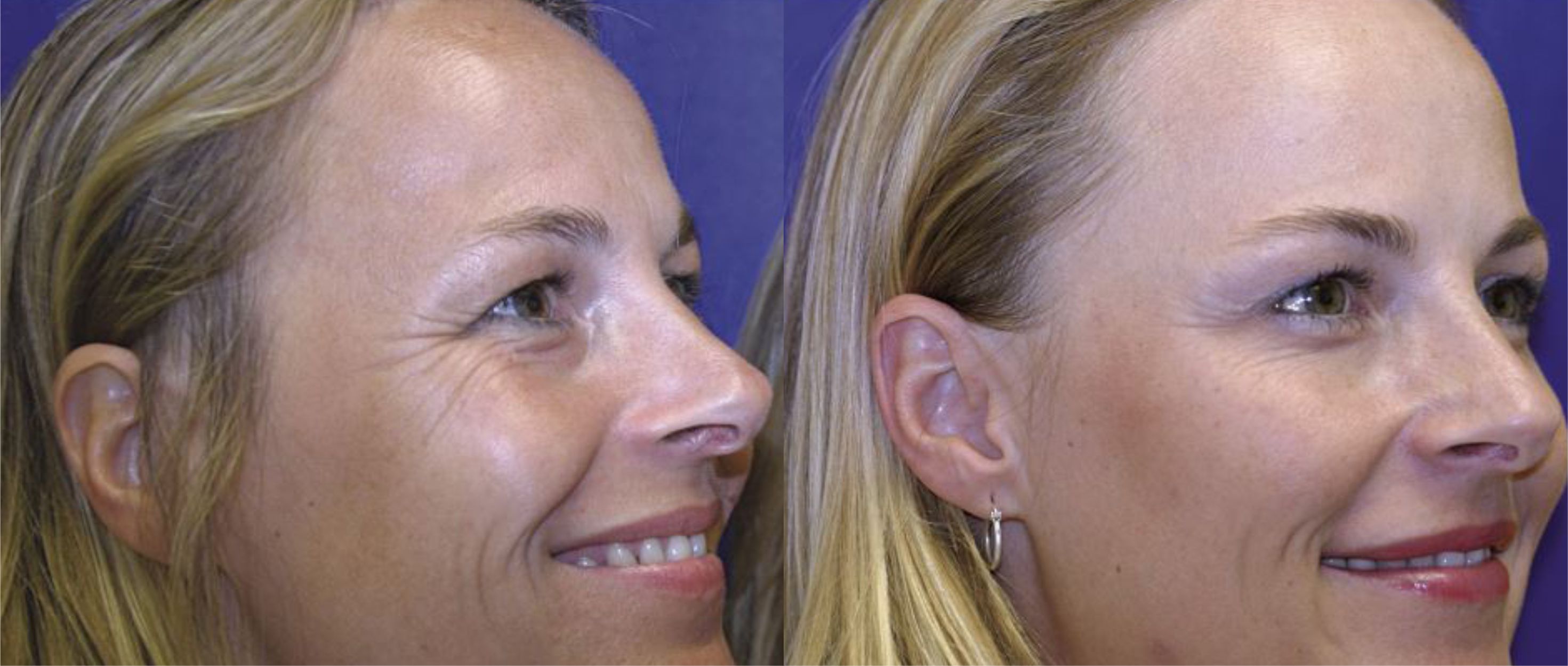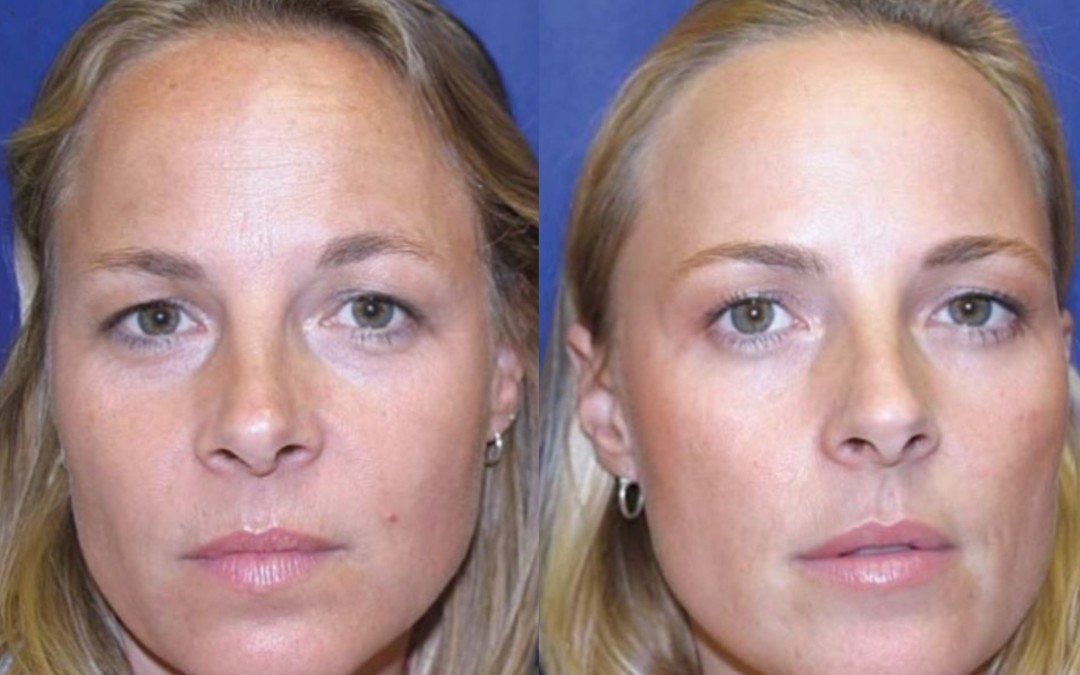These may look like rather impressive before-and-after Botox photos of the same person but they’re actually twins.
A study on twin sisters, over 13 years, one who used Botox regularly and one who had minimal treatment, concluded that Botox is significantly effective in preventing the formation of static lines and wrinkles.
The twin on the right had the treatment 2 or 3 times a year to her forehead over 13 years and her crow’s feet twice. The twin on the left received it only twice, at years 3 and 7, in her forehead.
The results speak for themselves. The twin on the left has clearly visible static lines, the lines that show when your face is at rest. The twin on the right has much smoother, more youthful skin.

The lines on your face can be one of two types. Active lines form as you move the muscles on your face and disappear when your face is at rest. With repeated use of the same muscles to form the same expression over a number of years active lines become static lines.
The picture below is perhaps the most important because it reveals something unexpected about the effect of Botox on active lines.
Botox is obviously highly effective on active lines because it relaxes the muscles that cause them. But, when you know that the twin on the right had her last treatment 4 months before this picture was taken it becomes clear that Botox has a longer-term effect on the formation of active lines. The Botox should have worn off at this point but her active lines are still significantly less apparent than her twin’s.

Here’s a summary of the report produced by the UCLA School of Medicine, Los Angeles, CA, USA.
Long-term effects of botulinum toxin type A (Botox) on facial lines: a comparison in identical twins.
OBJECTIVE:
To evaluate the presence of imprinted facial lines in identical twin sisters, one of whom had received botulinum toxin type A (Botox) treatment in the forehead and glabellar region regularly for 13 years and one of who had not. Crow’s feet were also compared.
METHODS:
One twin received Botox in the forehead and glabellar region (approximately 2 to 3 times each year over the past 13 years) and in the crow’s feet (twice in past 2 years). Her twin received Botox only twice (in the forehead and glabellar region, 3 and 7 years ago).
RESULTS:
Imprinted forehead and glabellar lines were not evident in the regularly treated twin but were evident in the minimally treated twin. Crow’s feet were less noticeable when the regularly treated twin smiled (even at 7 months after treatment) than when the minimally treated twin smiled. Untreated facial areas (eg, nasolabial folds) showed comparable aging in both twins. Neither twin experienced adverse effects.
CONCLUSIONS:
Long-term treatment with Botox can prevent the development of imprinted facial lines that are visible at rest. Botox treatment can also reduce crow’s feet. Treatment is well tolerated, with no adverse events reported during 13 years of regular treatment in this study.
Email us
care@rmclinic.co.uk
Call us
01226 491144
Text us
07568 730344
Roberts McCarron
The Coach House
51 Sackville Street
Barnsley
S70 2BZ
